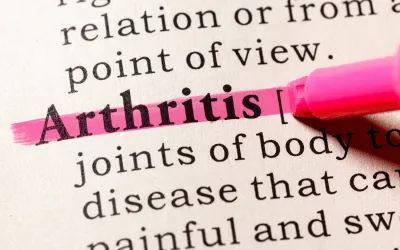About Arthritis
As the nation’s #1 cause of disability, arthritis affects nearly 60 million adults and 300,000 children. Over 100 types of arthritis and related conditions damage the joints and often other organs.
How can we assist you?
Helpful Tools for You

Embracing a Holistic Approach to Arthritis Care
Managing arthritis is not only about easing pain; it's about enhancing your overall well-being. A comprehensive arthritis care strategy not only relieves discomfort but also reduces inflammation, safeguards your joints and organs, and elevates your daily quality of life.
Dr. Eric Matteson, a rheumatologist at the Mayo Clinic, emphasizes that while pain relief is a positive indicator, it's vital to address the underlying inflammation to prevent potential long-term damage from conditions like rheumatoid arthritis (RA), psoriatic arthritis (PsA), and ankylosing spondylitis (AS).
Aiming for Remission
Doctors now possess advanced tools and medications that can significantly suppress many forms of inflammatory arthritis. When inflammation subsides, and your joints are back to normal, you've achieved what's known as remission. Prompt treatment after diagnosis, coupled with consistent medication as advised by your doctor, can lead to remission. Thanks to treatments like DMARDs and biologics, remission rates can soar up to 60% or even more. This means not only reduced pain but also improved mobility and fulfilling quality of life, decreasing risks associated with other ailments like heart diseases.
The Treat-to-Target Approach
Many healthcare professionals adopt the 'treat-to-target' strategy. This collaborative approach involves setting a treatment goal, preferably achieving low disease activity or remission. Periodic check-ups help monitor progress, with adjustments made to the treatment as needed.
Dr. David Pisetsky from Duke University Medical Center highlights that while alleviating inflammation can eliminate pain, it's only part of the picture. While severe inflammation is detectable via X-rays, low-level inflammation is trickier to diagnose. Blood tests like ESR and CRP gauge inflammation, but they might miss low-activity inflammation. Advanced tests, such as Vectra DA, offer a more comprehensive disease assessment, helping doctors accurately gauge inflammation levels.
The Importance of Lifestyle Choices
Medication alone won't suffice. Its efficacy amplifies when combined with positive lifestyle choices. Maintaining a healthy weight, ensuring optimal blood pressure and cholesterol levels, and quitting smoking can drastically enhance your life's quality.
Dr. Matteson advocates for a comprehensive approach, including physical therapy, exercise, education about the disease, and complementary therapies. Regular consultations with your rheumatologist to monitor your progress are key to reclaiming and maintaining your health.
Adhering to Your Medication Routine
Feeling better shouldn't mean ditching your medications, as silent inflammation might still be causing harm. It's crucial to stay committed to your treatment plan and communicate any concerns to your doctor. Not adhering to your medication regimen can hinder your doctor's ability to make informed treatment decisions.
Never Settle for Just "Okay"
Strive to achieve low disease activity or remission and don't stop at just feeling "okay". Collaborate closely with your doctor to pinpoint a treatment that addresses both inflammation and pain completely.
Effects of Arthritis

Cause of Disability
In the United States, 23% of all adults, or more than 54 million people, have arthritis. It is a leading cause of work disability, with annual costs for medical care and lost earnings of $303.5 billion.

Workforce Effects
Sixty percent of US adults with arthritis are of working age (18 to 64 years). Arthritis can limit the type of work they are able to do or keep them from working at all.

Global Impact
In fact, 8 million working-age adults report that their ability to work is limited because of their arthritis. For example, they may have a hard time climbing stairs or walking from a parking deck to their workplace.
Promoting Interventions That Reduce Arthritis Pain
American Arthritis Foundation recognizes several proven approaches to reduce arthritis symptoms:
Be active. Physical activity—such as walking, bicycling, and swimming—decreases arthritis pain and improves function, mood, and quality of life. Adults with arthritis should move more and sit less throughout the day. Getting at least 150 minutes of moderate-intensity physical activity each week is recommended.
Protect your joints. People can help prevent osteoarthritis by avoiding activities that are more likely to cause joint injuries.
Talk with a doctor. Recommendations from health care providers can motivate people to be physically active and join a self-management education program. Should your arthritis be interfering with your activities of daily living you may be a candidate to receive many new treatments, and learn how to reverse the arthritis condition.
Have a question?
We're Here to Help
By providing my phone number, I agree to receive text messages from the business.

